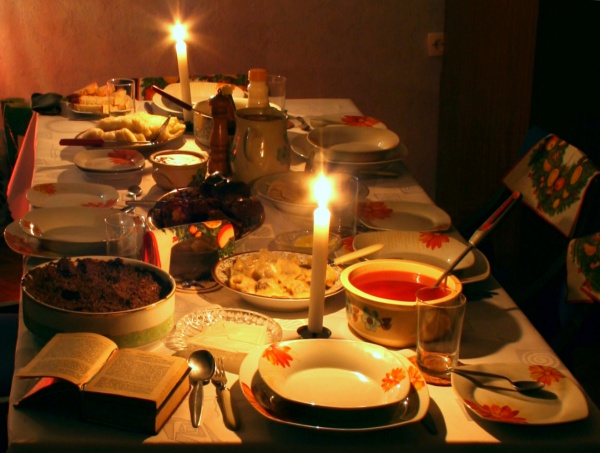Facts About Twelve-dish Christmas Eve supper
In Central, Northern, and Eastern Europe, particularly in regions that were once part of the Polish-Lithuanian Commonwealth, a twelve-dish Christmas Eve supper is a cherished tradition. This custom is especially vibrant in modern-day Poland, where sometimes even thirteen meatless dishes are served on Christmas Eve. The meal typically features fish, mushrooms, and various grains, adhering to the Nativity Fast, which restricts meat, eggs, and dairy products.
In Poland, the feast often begins with soups like mushroom soup or barszcz (beetroot soup). In Ukraine, Kutia—a sweet grain pudding—is a common starter. In Lithuania, desserts such as poppy milk and kūčiukai (small, crunchy pastries) are enjoyed. Fish dishes, including herring, carp, or pike, are staples, and mushrooms—whether dried or pickled—frequently appear on the menu. Dumplings with assorted fillings, sauerkraut, and hearty soups made from fish or mushrooms are popular in both Poland and Western Ukraine.
Drinks typically include dried fruit kompot or cranberry kisiel. Before beginning the meal, families participate in rituals that involve washing, reciting prayers, and receiving a blessing with honey. The Christmas Eve supper starts in the evening, often under the glow of candlelight, symbolizing either the birth of Jesus or the presence of deceased ancestors. In some areas, an extra plate and seat are set at the table for family members who have passed away, and unexpected guests are warmly invited to join the meal.
This Christmas Eve supper is more than just a meal; it is a deeply significant cultural and religious tradition. It creates a solemn, mystical atmosphere with its unique dishes and rituals that pay homage to both Christian and pre-Christian beliefs.

 Russia
Russia